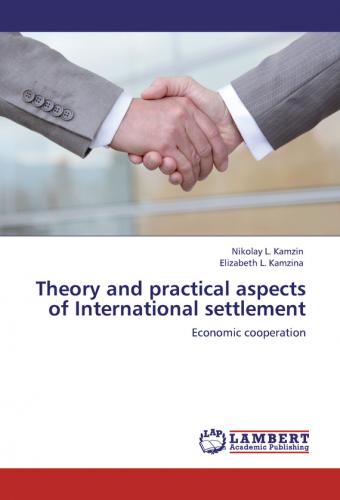Production, as is known, is the interaction of various factors[27] for the implementation of any neue Kombinationen connection is required, the combination, the coordination of individual factors, not always, or rather even not always located in the possession of a businessman, acting in their subject, whether public, public interest , which also stimulated by the global economic cooperation.
As part of the global economy lasting processes, but rather “the direction and degree of change in national economic life of the set of elements compared to the previous point”[28], called the market conditions are “business processes” global and global crises points and starting end of the previous economic cycle.
To fully participate in this “game” called the international economic cooperation, however, as to begin a local business from the subject required his personal attachment to its nature depends on its role and the remuneration for their participation. The ultimate party “game”, the consumer receives the rent as the excess of demand over the prevailing scale of the classical market, basically this is a false social value lost during the formation of the market and the market value of the accumulated savings in the form of money, an extra element to achieve the equivalent exchange[29].
A simple model implementation neue Kombinationen, at a minimum requires:
– material resources;
– administrative resources;
– financial resources;
– innovative resources.
Accordingly, the actors and their remuneration are as follows:
The owner – rent;
The worker – wage;
The capitalist – the percentage;
The entrepreneur – a profit.
“It is easier to obtain than to keep”, to maintain “stability zones” and the established order of the mechanism established by the provision of Art. 57[30] of the Constitution of the Russian Federation. Entrepreneur as a reward for his activity and the idea of business expects to receive income, the worker for his labor a guaranteed wage, the capitalist expects a capital gain, and the government imposes taxes and fees on its territory owners and users, whether natural, or man-made objects[31].
The nature of international economic cooperation is multifaceted. To describe its essence, the inner essence is to maintain world stability, permanence, the protection of existing values, the external entity is a reflection of the actual needs of stake holders to evaluate and order fulfillment.
Commitment generated by the commission of any act of the participants of this relationship remains “a feeling of incompleteness”, in the science of psychology there is a “Zeigarnik effect” whereby indeed interrupted, “unerledigter Handlunge”[32] is a strong position in the subject's memory rather than acts of completed actions. With regard to institutional and public entities believe it is undeniable accounting and provide periodic reporting on performance results.
In terms of institutional organization relationships in terms of turnover of public goods, the basis of civil rights are the property relations carried out in three areas: innovation, production, commercial, and financial[33].
So, how do at this stage of development is organized pursuant to mutual financial obligations within the framework of international economic cooperation.
Fundamental principles of this system are the subjects, which represent the private, institutional and public education sovereigns.
Individuals – are physical persons, residents in the attitude of one or more of the state, and foreign nationals (non-residents) in relation to other.
Institutional Education – an association created to carry out joint activities and to achieve certain goals in the composition, which is composed of different reasons individuals, institutional, educational, public sovereigns.
A public entity – the state, public association with all the attributes to separate sovereign territory, the presence of which, in effect, and distinguishes it from modern institutional structures already so similar to the state, but it is located in one of the jurisdictions.
Operators, agents are specialized institutional education, acting in accordance with the laws of the jurisdiction and the presence of registration. The activities carried out under a special permit, license of the Central Bank of the sovereign public, which gives them the right to perform certain banking transactions in accordance with standard operating procedures, which registered the order of their conduct.
Under Part 2[34] of Art. 75 of the Constitution of the Russian Federation, as a significant public entity accounting relations, established by the Central Bank of Russia, so it is not “a natural product of banking development”[35]. Created by the will of the state and burdened with the primary function of protecting and sustaining the national currency. Detail its legal status is defined by the Federal Law “On Central Bank of Russian Federation (Bank of Russia)” № 86-FL[36].
In this world everything has its price, the price is set in the currency of a State, between actors in international economic cooperation is most often recorded in the contract price in the currency EURO or USD, in view of current practice. And she has developed through standard SDR, which is practically obsolete and is used by inertia, a multi-system formation is projected to include it as the Yen and possibly the Chinese Yuan, ruble considered as a candidate for this role, it is premature[37].
However, examining the individual operations, as a conclusion that it depends on the interests and understandings of the parties.
The legal basis for using the Russian ruble in international transactions is the Federal Law “On Currency Regulation and Currency Control” № 173-FL[38].
Even in the first edition of the law (October 1992) was declared that the foreign exchange operations with the Russian ruble current account balance of payments are made without any restrictions. This is possible already at the first stage of market reforms in Russia to ensure the growth of liquidity in the currency market of the Russian Federation and prevent the use of ruble in payments for foreign trade, primarily with the CIS countries. On June
